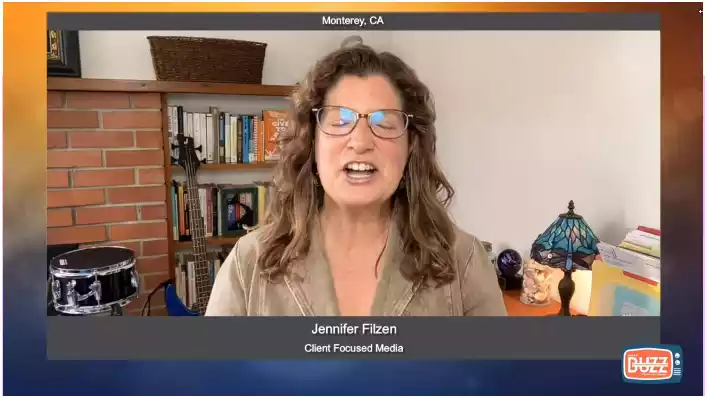Streamlining Success: Enhancing Systemic Efficiency in Prior Authorization Processes
Explore how achieving systemic efficiency in prior authorization processes can revolutionize healthcare. Discover strategies to streamline operations, reduce administrative burdens, and enhance patient care. Read more to uncover these transformative solutions.

Improving systemic efficiency in prior authorization processes is essential for reducing delays and enhancing patient care. By optimizing workflows, integrating advanced technologies, and fostering better communication between healthcare providers and insurers, the entire process can be streamlined. This not only speeds up approvals but also minimizes administrative burdens, allowing healthcare professionals to focus more on patient outcomes. Interested in how these improvements are being implemented?
Explore key strategies!
Table of Contents
Systemic Efficiency in Prior Authorization Processes

Getting a Grip on Prior Authorizations Current Scenario
Before delving into solutions, it’s vital to grasp the state of the authorization procedure. Many healthcare systems have been overwhelmed by tasks associated with these approvals. According to a study by the American Medical Association (AMA), prior authorization consumes a portion of healthcare providers’ administrative duties, leading to time and resource wastage. In reality, providers spend nearly two hours daily on authorization tasks. These delays impact healthcare professionals’ work burden and morale, adversely affecting patient satisfaction and health outcomes.
Challenges Encountered in Prior Authorization Processes
The issues with authorization inefficiencies arise from a variety of reasons, such as:
- Complexity of Guidelines: Insurance companies frequently update their authorization requirements, causing confusion among healthcare providers about what is needed for approval. This evolving landscape can cause delays as providers navigate through sometimes conflicting procedures.
- Inconsistent Communication: Effective communication between healthcare providers, insurers, and patients plays a role in the authorization process. However, many procedures still rely on outdated communication methods like faxing documents or making phone calls, leading to information loss and further delays.
- Lack of Standardization: There must be a standard for authorization across healthcare systems. Each insurer’s protocols make the process cumbersome for providers treating patients with multiple insurance plans.
- Impact on Patient Care: Delays in obtaining approvals can negatively affect care for those needing immediate treatment. Extended wait times could worsen conditions and result in severe health complications.
Ways to Improve Efficiency in Prior Authorization
To make the prior authorization process smoother and lessen the workload for healthcare providers and patients, some strategies can be put into place:
Technology solutions, such as integrating electronic health records (EHRs), including authorization workflows, can significantly improve communication and record keeping. Monitor authorizations directly through their EHR systems, reducing the need for outdated communication methods.
- Setting Clear Guidelines: Insurance companies should aim to establish easily accessible protocols for authorizations. This helps providers understand which requests need approval and the criteria they must meet.
- Training and Education: Education for healthcare providers on the specifics of authorization can enhance their comprehension and adherence to insurer requirements. Training sessions may cover trends and updates in the authorization process.
- Implementing a System: A centralized platform for submitting and tracking authorizations can simplify the process for providers and insurers. This system allows for updates, cutting down on delays associated with methods.
- Promoting Collaboration Among Key Players: Encouraging collaboration among stakeholders – including healthcare providers, insurance companies, and regulatory bodies – through discussions can result in shared insights and solutions that benefit the system. Collaborative teamwork is crucial in pushing for standardization, which is critical to improving processes and making them more efficient.
I'm very thankful for Portiva who I know is looking after my practice while I'm gone the virtual assistants can manage prescription refills, documents they can triage patients and just kind of answer administrative questions and they can handle a lot on their own. But also, they're very good about contacting me if there's any emergency or anything I need to attend to. So I'm very thankful for Portiva they can help almost any provider almost anywhere and it really allows for some good work-life balance as I'm getting to experience right now at my family farm so I'm very thankful for Portiva and I'm very happy to use their services"

Board Certified Family Medicine Physician

Portiva's Virtual Medical Assistant - I have all the support I need. There's somebody checking my email, any patient messages. Patients are still able to schedule and handle any scheduling issues and any kind of billing that needs to still go through. Portiva hands handles it all for me. I have support i have somebody that I can access 24/7 pretty much. It's all very seamless. If somebody has an emergency or needs a medication called in. I know that the va's at portiva will handle that for me.

Board Certified Family Medicine Physician

Assessing Progress in Simplifying Prior Authorization

- Approval Processing Times: Keeping track of how long it takes for approvals can offer insights into enhancements in processing efficiency.
- Provider Satisfaction Surveys: Collecting input from healthcare providers regarding their experiences with authorization procedures can pinpoint areas needing attention and enhancement.
- Patient Health Outcomes: Examining recovery rates and adherence to treatment regarding delays in authorizations can provide a broader view of the impact on healthcare quality.
In Conclusion
Simplifying the process of authorization is crucial for improving efficiency in healthcare delivery. By recognizing obstacles, embracing solutions, and promoting stakeholder cooperation, we can lessen administrative burdens, boost patient care, and ultimately achieve improved health outcomes. The journey toward streamlining authorization isn’t about cutting through bureaucracy: it’s a significant step toward creating a more responsive and efficient healthcare system that prioritizes patient needs while upholding the integrity of care provision.
In the changing landscape of healthcare, the key to improving the authorization process lies in finding a harmonious balance between effectiveness and maintaining high standards of patient care. Patients must receive suitable treatments without being burdened by bureaucratic hurdles. Collaboration is essential in overcoming obstacles and establishing a more effective authorization system that benefits everyone involved. Let’s aim for a healthcare system that places welfare at the forefront. Together, let’s strive towards a brighter and healthier tomorrow.
To learn more about insurance verification that can enhance your medical practice. Discover more about Portiva and unlock a world of possibilities by visiting our homepage today!
- Exploring the impact of prior authorization on patient care
- Critical role of feedback in the preauthorization process
- The significance of prior approval in today’s healthcare
- Preauthorization outsourcing services
- Empowering patients in healthcare decisions with prior authorization
- Strategies for advocating fair prior authorization policies
- Importance of authorization in insurance policies
- Exploring the ethics of prior authorization
- Cutting down on issues with effective preauthorization
- Measuring efficiency with precertification approval time
- Role of insurance verification in preauthorization
- Prior authorization insurance on patient care and accessibility
- Utilizing experts for prior authorization
- Enhancing quality service with prior authorization
- Prior authorization services for mental well-being
- Reducing stress by outsourcing prior authorization
- How interdisciplinary teams are transforming the prior authorization process
- Quality patient care with outsourced prior authorization
- Virtual medical assistants handling precertification


